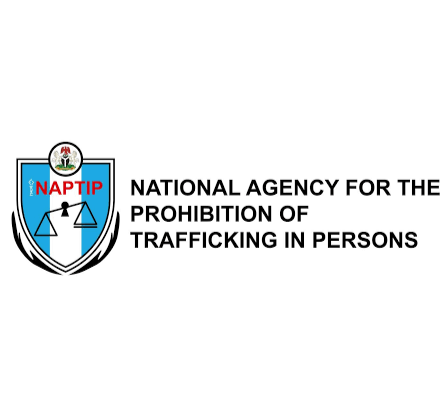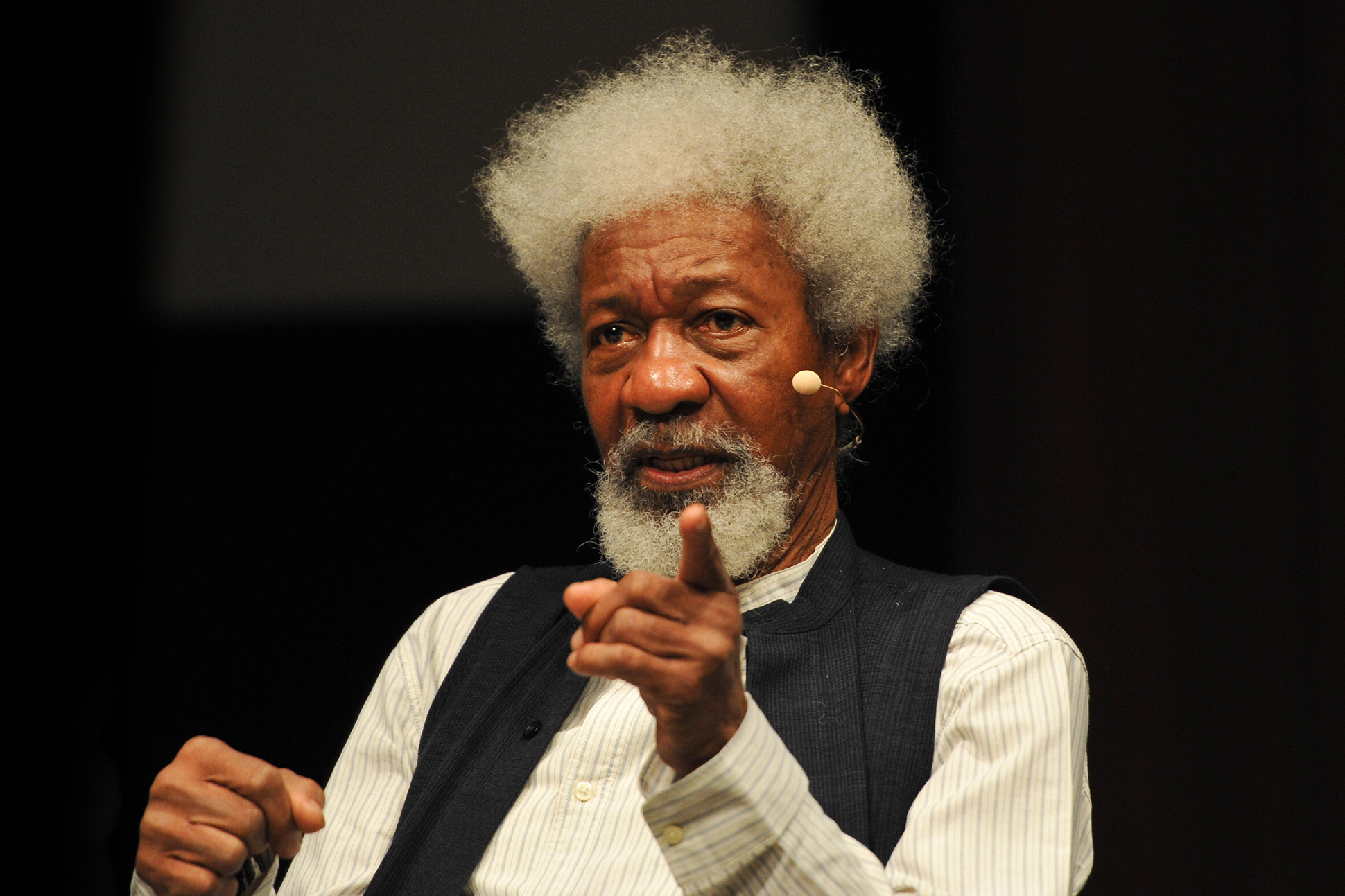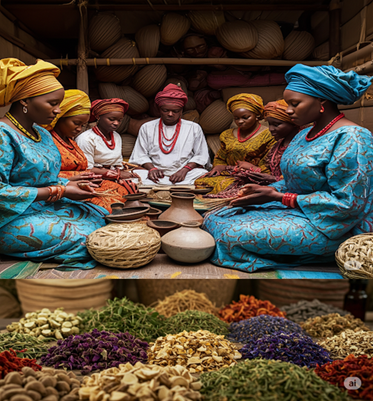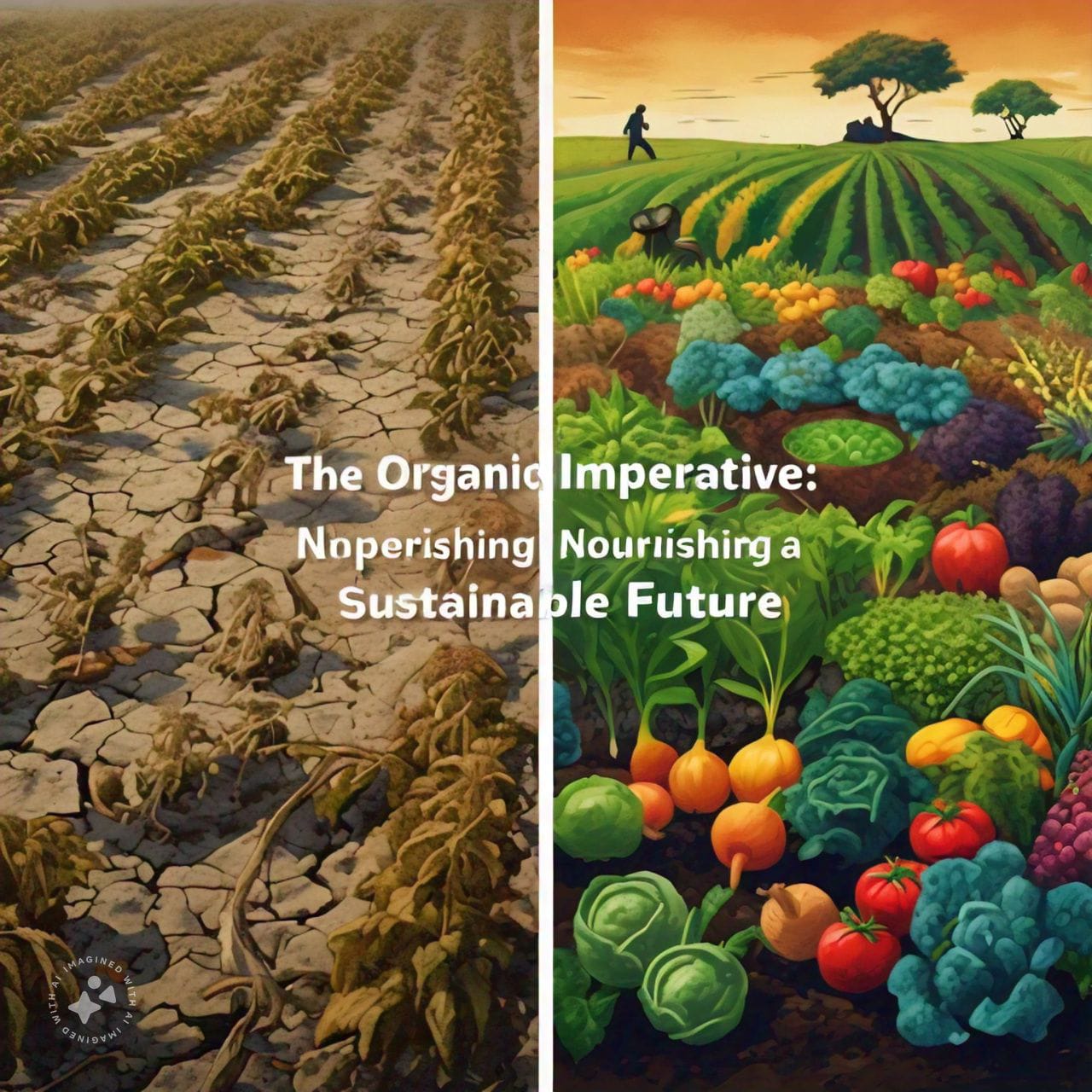By Dr. Iyke Ezeugo,
Human trafficking remains a deeply entrenched and multifaceted problem in Nigeria, a nation recognized as a source, transit, and destination country for victims of this heinous crime. Despite significant efforts and interventions implemented over the past two decades, the issue persists, adapting and evolving in its dimensions and impacts. This report undertakes a comprehensive analysis of human trafficking in Nigeria since the establishment of the National Agency for the Prohibition of Trafficking in Persons (NAPTIP) in 2003. By examining the socio-political context that necessitated its creation, tracing trends every five years, and incorporating new dimensions and discoveries, this report aims to provide a deeper understanding of this complex challenge.
From the Frontlines to Scholarship: My Engagement with Nigeria's Human Trafficking Crisis
The stark realities of human cruelty have deeply etched my professional journey, a profound foundation for my foray into this critical analysis of human trafficking in Nigeria. My time on the Brekete Family platform, where as a Consultant and Anchor, I employed Investigative and Development Journalism to confront such issues, provided an unvarnished window into the myriad untold pains, confusions, and frustrations endured by victims of this insidious crime. It was within this crucible of human experience that the true gravity and pervasive nature of human trafficking first seared itself into my consciousness, igniting an unwavering commitment to understanding and combating this abhorrent practice. This burgeoning passion found fertile ground through a significant collaboration with the National Agency for the Prohibition of Trafficking in Persons (NAPTIP), particularly alongside the formidable leader of its Rapid Response Squad, Dr. Emeh Magnus. Dr. Magnus's tireless interventions on the front lines of this battle, coupled with the profound insights captured in his seminal work, VIOLENCE AGAINST PERSONS: A PRISM PERSPECTIVE FOR A FIRST RESPONDER, have been deeply influential. Recognizing the immense value of his experience and the power of his narrative, I had the distinct honor of serving as the Literary Consultant and writing the foreword for this indispensable guide.
As I articulated in my forwarding, "Dr. Emeh Magnus delivers an incisive and poignant exploration of the harrowing realities that victims of violence endure. Through vivid and heart-wrenching narrative, he captures not only the immediate pain and terror felt by the helpless but also the resounding call for urgent intervention. His work serves as an indispensable guide for first responders, offering them the critical insights and tools needed to act swiftly and decisively in the face of unimaginable cruelty." Indeed, Dr. Magnus’s book transcends mere documentation; it is a frontline veteran’s personal experiences meticulously translated into a practical roadmap for protection and the pursuit of justice. It is this very principle – the translation of lived experience into actionable knowledge – that underpins my dedication to this research. I believe that by amplifying the voices of those who have witnessed and combatted this crime firsthand, we can empower a new generation of advocates and responders to stand resolutely in defense of the vulnerable.
Furthermore, my current role as a member of the Federal Government's Five-Man Investigative Panel, possessing forensics expertise, and auditing the operational activities of the Nigerian Correctional Service Centers, provides another crucial lens through which to examine this issue. Interfacing directly with inmates, I have taken a particular interest in the stories of those facing trial or convicted for offenses related to human trafficking and violence against persons. These encounters, often marked by the bewildering cruelty of individuals who exploit their advantage to commodify fellow human beings – particularly women and children – fuel my intellectual curiosity and moral imperative to unravel the complexities of this crime.
It is through this confluence of direct engagement, collaboration with leading figures in the anti-trafficking movement, and ongoing investigation into the systemic dimensions of this problem that I approach this comprehensive analysis. My aim is not merely to present data, but to weave a narrative grounded in practical experience and informed by foundational works, thereby offering a perspective that is both authoritative and deeply resonant, compelling the reader to engage with the gravity of this issue and the urgent need for sustained and informed action.
The Genesis of NAPTIP and the Landscape of Human Trafficking in Nigeria
The early 2000s presented a confluence of factors that underscored the urgent need for a specialized agency to combat human trafficking in Nigeria. Nigeria's commitment to international legal frameworks was evident in its ratification of the United Nations Convention against Transnational Organized Crime (UNTOC) and its Protocol to Prevent, Suppress and Punish Trafficking in Persons, especially Women and Children, in 2000 and 2001. This act signaled a recognition of the transnational nature of organized crime, the incentives, and the specific vulnerability of individuals to trafficking. Globally, the late 1990s and early 2000s witnessed a rising awareness of human trafficking as a severe human rights violation, placing pressure on governments worldwide to take concerted action.
Within Nigeria, the observations of prominent individuals like Mrs. Amina Titi Atiku Abubakar, the wife of the then Vice-President, played a crucial role in galvanizing action. Her firsthand accounts of the exploitation faced by Nigerian women engaged in sex work abroad, particularly in Italy, led to the establishment of the Women Trafficking and Child Labour Eradication Foundation (WOTCLEF) in 1999. WOTCLEF became a key advocate for legislative reform and institutional response. The sheer volume of the commodification of women and children as articles of trade during this period was alarming, highlighting the scale and urgency of the problem. Furthermore, the existing legal framework in Nigeria lacked specific provisions to adequately punish human traffickers. Law enforcement agencies and the courts were often compelled to resort to applying sections of the penal code related to offenses such as forgery of travel documents or abduction, which did not fully capture the gravity and complexity of human trafficking. This legislative gap was a significant impetus for the creation of NAPTIP. The broader socio-economic context of Nigeria in the early 2000s was characterized by pervasive poverty, high rates of unemployment, social instability, and widespread corruption, all of which contributed to the vulnerability of individuals to becoming victims of trafficking. Nigeria was increasingly recognized as a source, transit, and destination country for the trafficking of human beings, further underscoring the need for a comprehensive national response.
In response to these pressing issues, the Nigerian government established the National Agency for the Prohibition of Trafficking in Persons (NAPTIP) on July 14, 2003, through the enactment of the Trafficking in Persons (Prohibition) Enforcement and Administration Act 2003. This landmark legislation was the outcome of a private member bill sponsored by WOTCLEF, demonstrating the significant impact of civil society advocacy. Nigeria became the first country in Africa to enact such a comprehensive law and establish a specialized, multi-functional agency dedicated to combating human trafficking. NAPTIP was conceived as the Federal Government's primary institution to address the scourge of trafficking in persons. The initial mandate of the agency was broad and comprehensive, encompassing the establishment of a coordinated preventive, regulatory, and investigatory machinery aimed at eradicating human trafficking. This included the responsibility to investigate all cases of trafficking, including forced labor, child labor, forced prostitution, and other forms of exploitation; to encourage and facilitate the participation of victims in investigations and proceedings; to enhance the effectiveness of law enforcement agents; to create public awareness through various means; to establish and maintain communication for rapid information exchange; to conduct research on the causes and patterns of trafficking; and to implement all relevant bilateral and multilateral treaties and conventions adopted by Nigeria.
Dimensions and Scope of Human Trafficking in Nigeria (2003-Present)
Since its inception, NAPTIP has grappled with the multifaceted dimensions of human trafficking in Nigeria. The types of exploitation have remained largely consistent, though their manifestations and prevalence have evolved.
Sex trafficking continues to be a dominant form of exploitation, disproportionately affecting women and girls both within Nigeria and across its borders. Nigerian women continue to be trafficked to Europe, particularly to countries like Italy, Belgium, the Netherlands, Germany, Spain, and the UK, as well as within West Africa. Edo State has been consistently identified as a major hub for external trafficking for sexual exploitation.
Forced labor and domestic servitude remain prevalent forms of exploitation affecting both adults and children. Victims are often subjected to hazardous conditions in granite mines, engaged in street hawking, or forced into domestic work. Children from neighboring West African countries such as Benin, Togo, Ghana, and Niger are also trafficked into Nigeria for forced labor.
Child begging, particularly within the Almajiri system in northern Nigeria, remains a significant and prevalent form of child exploitation. This system, often linked to religious schools (Daaras or Almajiri schools), sees children trafficked and forced to beg for alms.
While less documented, concerns about organ harvesting persist, with some reports linking it to "baby factories". The recent conviction in the UK of a Nigerian senator for organ trafficking underscores the transnational dimension of this crime.
Other forms of exploitation, including the drug trade, child soldiering, and forced marriage, continue to be identified, particularly in regions affected by conflict. The recruitment and use of child soldiers by groups like Boko Haram in the Northeast remain a grave concern.
Vulnerable populations remain consistent, with women and children being the most susceptible to trafficking across all forms of exploitation. However, there is a growing recognition of men and boys as victims of trafficking as well. Individuals from poor socio-economic backgrounds, those seeking better opportunities abroad, and those affected by insecurity and instability remain particularly vulnerable. Internally Displaced Persons (IDPs), particularly in the Northeast region affected by conflict, are also highly vulnerable to trafficking.
The driving factors behind human trafficking have remained consistent over the years. Economic hardship, fueled by high unemployment, underemployment, and poverty, is a fundamental root cause. The country's population boom contributes to increased competition for limited resources and opportunities, further exacerbating vulnerability. Insecurity and political instability, particularly the prolonged Boko Haram insurgency in the Northeast, have displaced communities and made individuals more susceptible to trafficking. Nigeria's porous borders, especially with Niger, facilitate the movement of both traffickers and victims. Traditional practices, such as the practice of entrusting children from poor homes to wealthier families as domestic help, can create vulnerabilities exploited by traffickers. Finally, deception and coercion remain central tactics employed by traffickers, who often use false promises of better opportunities and psychological manipulation to lure and control their victims. The use of threats of voodoo curses to control victims is a particularly insidious characteristic of the Nigerian trafficking system.
Geographically, Edo State remains a consistently identified major hub for external trafficking, particularly for sexual exploitation. Benue State has emerged as a significant source state for both internal and cross-border trafficking. Akwa Ibom and Cross River States are known source states for the trafficking of children, often by sea, to Gabon, Cameroon, and Guinea for forced farm labor. Other states like Delta, Lagos, Ogun, Anambra, and Imo have also been identified as source states. The northern states of Nigeria are particularly affected by internal child trafficking for the purpose of begging, within the Almajiri system.
Primary destination countries in Europe include Italy (with cities like Rome and Turin being significant), Belgium, the Netherlands, Germany, Spain, the UK (including London, Birmingham, and Manchester), Austria, Norway, and France. North Africa, particularly Libya, Algeria, and Morocco, serves as both a transit point and a destination, with reports of Nigerian girls being held captive in the commercial sex trade. West African nations including Ghana, Mali, Cote d'Ivoire, Cameroon, Gabon, Guinea, Benin, Togo, and Niger are significant both as source and destination countries within the region. The Middle East, specifically Saudi Arabia and the UAE, is also a destination for Nigerian victims, often for forced labor and prostitution.
Internal trafficking routes primarily involve the movement of individuals from rural communities to urban centers such as Lagos, Abeokuta, Ibadan, Kano, Kaduna, Calabar, and Port Harcourt, where they are exploited for domestic servitude, farm labor, and prostitution. The movement of Almajiri children for begging often occurs between northern states like Kano, Kaduna, and Sokoto. Trafficking within the Niger Delta region has also been noted.
Trends in Human Trafficking in Nigeria Since NAPTIP's Creation
The period between 2003 and 2008 marked the initial phase of Nigeria's formal response to human trafficking with the establishment of NAPTIP in July 2003. Early efforts concentrated on building the agency's operational structure and establishing a legal framework, including an amendment to the founding Act in 2005 aimed at strengthening its capacity. Nigeria distinguished itself by being the first nation in Africa to enact comprehensive anti-trafficking legislation and create a specialized agency to address the issue. Obtaining reliable statistics during these early years proved challenging, but available estimates suggested a significant prevalence of human trafficking. The focus during this period was predominantly on external trafficking, particularly the trafficking of women and girls to Italy for sexual exploitation. However, there was also an emerging awareness of internal trafficking for domestic servitude and child labor. A significant milestone was achieved in November 2005 when NAPTIP recorded its first conviction under the new anti-trafficking law.
The period from 2008 to 2013 witnessed a shift in focus, with increased attention being paid to internal trafficking alongside the persistent problem of cross-border trafficking. A key development was the adoption of the National Policy on Protection and Assistance to Trafficked Persons in 2008, which aimed to provide a framework for supporting victims. A disturbing trend that gained prominence during this time was the emergence of "baby factories," a new and particularly heinous form of human trafficking involving the exploitation of pregnant women and the sale of their children. The trafficking of Nigerians to Europe continued at high rates, with Italy remaining a primary destination, but there was also a noted increase in trafficking to North Africa and the Middle East. While NAPTIP reported investigating a growing number of cases, the rate of convictions remained relatively low. A recurring challenge for NAPTIP during this period was inadequate funding and limited resources, which hampered its operational effectiveness.
Between 2013 and 2018, the landscape of human trafficking in Nigeria was significantly influenced by increased insecurity, particularly the rise of the Boko Haram insurgency in the Northeast. This led to heightened vulnerability and increased instances of trafficking, including the forced recruitment of child soldiers and the sexual exploitation of Internally Displaced Persons (IDPs). The issue of "baby factories" gained further prominence and became a subject of significant national and international concern. There was also an increasing awareness of the trafficking of men and boys for labor exploitation, although comprehensive data remained limited. While Edo State continued to be a major source of trafficking victims, there were indications that trafficking rings were shifting their focus to other states in the southern part of Nigeria. Collaboration with international partners and foreign governments intensified during this period, reflecting a growing recognition of the transnational nature of the crime. In a significant move to further strengthen the institutional framework, the Trafficking in Persons (Prohibition) Enforcement and Administration Act was re-enacted in 2015, incorporating amendments to address emerging trends and challenges.
The period from 2018 to 2023 brought new dimensions to the fight against human trafficking in Nigeria. The COVID-19 pandemic likely had an impact on trafficking patterns and the ability to detect cases. A significant emerging trend was the rise of online human trafficking and exploitation, with traffickers increasingly using social media platforms and the dark web for recruitment and exploitation. In response, NAPTIP established a Cybercrime Response Team to address this growing threat. Internal trafficking continued to be a major concern, accounting for a significant proportion of reported cases. Benue State emerged as a particularly significant source of rescued trafficking victims during this period. Notably, Mali became a key country for the rescue of Nigerian trafficking victims outside of Nigeria. Government efforts in prosecution and convictions showed a marked increase, with 2022 recording the highest number of convictions in a single year since NAPTIP's inception. Collaboration with international organizations such as IOM and UNODC remained crucial in providing technical assistance, funding, and support for various anti-trafficking initiatives. There was also a continued focus on strengthening state-level task forces against human trafficking to enhance local responses.
Statistics on Human Trafficking in Nigeria (2003-Present)
Estimates of the overall prevalence of human trafficking in Nigeria remain alarmingly high. While the original draft of this report noted estimates of 750,000 to one million persons being trafficked annually, more recent data from 2021 suggests an even more concerning figure, with approximately 1.6 million individuals living in modern slavery in Nigeria. The United Nations Office on Drugs and Crime (UNODC) also estimates that between 750,000 and 1,000,000 Nigerians are trafficked every year.
Data from NAPTIP between 2019 and 2022 indicates that a larger proportion of human trafficking in Nigeria occurs internally, with 61% of cases being within the country's borders, while 39% are cross-border. In 2022 alone, NAPTIP reported handling 1,440 cases of human trafficking, with 71.4% classified as internal and 28% as external.
The demographics of trafficked persons consistently show that women and girls constitute the majority of victims, particularly in cases of sex trafficking. Children also constitute a significant proportion of trafficking victims, with reported increases in detection rates in recent years. Edo and Benue States are frequently identified as primary source states for trafficking victims.
Government and Civil Society Efforts: A Longitudinal Perspective
The Nigerian government, through NAPTIP, has continuously adapted its legal and strategic frameworks to combat human trafficking. The initial Trafficking in Persons (Prohibition) Enforcement and Administration Act of 2003 was amended in 2005 to enhance the agency's powers. Recognizing the evolving nature of the crime, the Act was repealed and re-enacted in 2015 as the Trafficking in Persons (Prohibition), Enforcement and Administration Act, 2015. NAPTIP's five-pronged strategy, encompassing Policy, Prevention, Protection, Prosecution, and Partnership, has been central to its operations since its inception, with adjustments made over time to address emerging challenges.
Since 2003, NAPTIP has recorded numerous achievements, including investigating thousands of cases, prosecuting hundreds of offenders, and securing a growing number of convictions. Notably, there has been a significant increase in conviction rates in recent years. The agency has also rescued and assisted a large number of victims, raised public awareness through various campaigns, and established crucial partnerships with both national and international stakeholders. Despite these efforts, NAPTIP has faced persistent challenges, including inadequate funding, intra-office politics and operational bureaucratic bottlenecks, a slow judicial process, corruption within various levels of governance, insufficient shelter facilities for victims, and the ever-evolving tactics of human traffickers. To adapt to these challenges, NAPTIP has developed National Action Plans, established state-level task forces against human trafficking, increased collaboration with international partners, and created specialized units to address emerging trends like online trafficking. How efficient these work is discussion for another day.
Data regarding NAPTIP's annual budget and resource allocation over the years is somewhat fragmented. However, available information suggests fluctuations and a potential inadequacy of funds to fully meet the demands of combating human trafficking. For instance, in 2009, the Nigerian government pledged over 7 million in annual funds for NAPTIP's operations. In 2013, the government allocated approximately US11.9 million naira equivalent to NAPTIP. More recently, NAPTIP's budget has been reported to be between NGN 2.8 billion and NGN 4.3 billion per year between 2018 and 2023. The allocation for victim care has also varied, with NAPTIP receiving $715,100 for victim care in 2018. These figures highlight the significant, yet potentially insufficient, financial resources dedicated to combating this crime. The rightful application of the funds is not the focus of this very work.
Civil society organizations and NGOs have played an increasingly vital role in complementing government efforts since NAPTIP's creation. These organizations have played a crucial role in victim identification, rescue, rehabilitation, advocacy, and raising public awareness. This is part of what I did alongside my colleagues on the Brekete Family Platform, Human Rights Radio and Television Abuja. They often work in close collaboration with NAPTIP and international organizations, providing essential services and support to trafficking survivors. However, a persistent challenge for many of the genuinely committed NGOs is the scarcity of resources and efficiency in their use of resource when available. This often hinders long-term planning, overall impact and sustainability.
Impacts of Human Trafficking: A Deeper Understanding
The impacts of human trafficking on victims are profound and long-lasting, encompassing severe physical and psychological consequences. Many suffer immense physical abuse, sexual violence, and various health issues, including the risk of contracting HIV/AIDS, and other sexually transmitted diseases. The psychological trauma can be particularly debilitating, often requiring long-term and specialized support. Victims are stripped of their freedom and dignity, subjected to forced labor, endless cycles of rape and sexual abuse, debt bondage, and conditions akin to slavery.
Families of trafficked individuals also endure immense emotional distress and often face significant financial burdens and social stigma when the victims are exposed. They may incur substantial debt to traffickers in an attempt to facilitate their loved ones' journeys, and often face pressure to repay these debts, even when the promised opportunities fail to materialize.
The impacts on society are far-reaching. Economically, human trafficking leads to losses through the exploitation of labor and the creation of illicit economies. Socially, it erodes trust within communities and contributes to the spread of diseases such as HIV/AIDS and similar sexually transmitted diseases. Furthermore, the prevalence of human trafficking negatively impacts Nigeria's international standing and image.
The Nigerian government bears significant financial and policy implications in addressing human trafficking. This includes the direct costs of funding agencies like NAPTIP, supporting law enforcement efforts, providing care and rehabilitation services for victims, and engaging in international cooperation to combat transnational trafficking networks.
Comparative Analysis with Other African Nations
Human trafficking is a widespread issue across the African continent, and Nigeria's experience shares similarities with that of other nations in the region. Benin has been identified as a significant source country for children trafficked into Nigeria for forced labor in granite quarries. More broadly, children from various West African countries experience forced labor within Nigeria, including in the mining sector. Conversely, Nigerian women and children are also trafficked to other West and Central African countries such as Gabon, Cameroon, Ghana, Chad, Benin, Togo, Niger, Burkina Faso, and The Gambia for similar forms of exploitation.
Niger faces comparable challenges, particularly with child forced begging and traditional forms of slavery. Kenya, like Nigeria, is recognized as a source, transit, and destination country for human trafficking and has been making efforts to combat it, although it faces challenges such as corruption. Many African nations grapple with the issue of domestic human trafficking, which often receives less international attention than cross-border trafficking. Recognizing the regional nature of the problem, West African governments are increasingly working together to develop coordinated strategies to combat human trafficking. Nigeria's experience, while bearing its own unique characteristics and scale, reflects broader patterns of human trafficking vulnerability and exploitation prevalent across the African continent.
New Dimensions and Discoveries
The landscape of human trafficking in Nigeria continues to evolve, with the emergence of new dimensions and a deeper understanding of existing ones. A significant trend is the increasing use of online platforms for human trafficking and exploitation. Traffickers are exploiting social media platforms and the dark web to recruit victims and facilitate their exploitation. This necessitates a corresponding evolution in law enforcement strategies and resources, as demonstrated by NAPTIP's establishment of a Cybercrime Response Team. The effectiveness and efficiency of this team is a different cup of tea. However, what is not in doubt is the fact that they can benefit from up-skilling in online reconnaissance, open-source intelligence, cyber warfare, and digital forensics tailored for their mandate.
The intersection of human trafficking with other forms of organized crime is becoming increasingly apparent. Human trafficking is increasingly linked to cybercrime, drug trafficking, and the smuggling of migrants, highlighting the need for a multi-agency approach to tackle these interconnected criminal activities. The ongoing impact of conflict and displacement continues to be a significant factor shaping trafficking patterns in Nigeria, with IDPs remaining particularly vulnerable to exploitation.
Recent research emphasizes the crucial role of social media in facilitating trafficking and underscores the need for improved data collection and analysis to better understand these evolving trends. While women and girls remain the primary victims, there is a growing recognition and awareness of the trafficking of men and boys for various forms of exploitation, although comprehensive data in this area is still limited. Furthermore, research has revealed the increasing involvement of former victims of trafficking who, after repaying their debts, become traffickers themselves, creating a cycle of exploitation within sex trafficking rings. Perhaps, if the victims care strategy and mechanisms are working effectively, this last group may be very insignificant.
Conclusion and Recommendations
Human trafficking in Nigeria is a deeply entrenched issue with multifaceted dimensions that have persisted and evolved since the establishment of NAPTIP in 2003. While significant progress has been made in terms of legal frameworks, institutional responses, and increased awareness, the problem remains a critical challenge. The analysis reveals consistent patterns of vulnerability among women and children, driven by economic hardship, insecurity, and traditional practices. The geographical focus on states like Edo and Benue as source regions, and the identification of key destination countries in Europe, West Africa, and the Middle East, highlight the complex web of internal and transnational trafficking networks.
The trend analysis over the past two decades underscores the adaptive nature of human trafficking, with emerging challenges such as online exploitation and the impact of conflict requiring continuous adjustments in strategies, operational framework, and resource allocation. While government efforts, primarily through NAPTIP, have intensified, as evidenced by increasing conviction rates, persistent issues such as inadequate funding, corruption, and the need for more effective victim support services continue to hinder progress. The crucial role played by civil society organizations in all aspects of combating human trafficking cannot be overstated, and their sustainability requires greater support and some sort of coordination.
To strengthen Nigeria's response to human trafficking, the following recommendations are proposed:
1. Enhance Legislative and Policy Frameworks: Continue to review, and update anti-trafficking legislation to effectively address emerging trends, such as online trafficking and organ harvesting. Ensure that penalties for all forms of trafficking are sufficiently stringent and consistently enforced.
2. Strengthen Law Enforcement and Prosecution: Increase funding, training and resources for NAPTIP and other relevant law enforcement agencies to enhance their capacity for investigation, intelligence gathering, and prosecution of trafficking cases, particularly in the online space. Implement measures to address corruption within law enforcement and the judiciary that undermines anti-trafficking efforts.
3. Improve Victim Protection and Support Services: Significantly increase the availability of comprehensive and long-term support services for all victims of trafficking, including shelter, medical care, psychological counseling, legal aid, strategic economic empowerment, and reintegration programs. Ensure that these services are gender-sensitive, trauma-informed, and accessible to all, including men and boys.
4. Increase Prevention Efforts: Expand public awareness campaigns, particularly in rural communities and identified source states, to educate potential victims and their families about the risks and tactics of traffickers. Support community-based initiatives that address the root causes of vulnerability, such as poverty and lack of economic opportunities.
5. Address Root Causes: Implement comprehensive strategies to tackle the underlying socio-economic factors that drive human trafficking, including poverty reduction programs, job creation initiatives, and measures to enhance security and stability, particularly in conflict-affected regions.
6. Foster Greater Collaboration and Coordination: Strengthen collaboration and information sharing between NAPTIP, other government agencies, civil society organizations, international partners, and relevant stakeholders at both national and state levels. Enhance cross-border cooperation with neighboring countries and destination countries to disrupt transnational trafficking networks.
7. Promote Evidence-Based Interventions: Invest in research and data collection to gain a more accurate understanding of the prevalence, patterns, and trends of human trafficking in Nigeria, including the trafficking of men and boys. Utilize this evidence to inform the development and implementation of more effective and targeted anti-trafficking interventions.
8. Enhance Border Security: Strengthen border management systems and increase surveillance to prevent the illegal movement of traffickers and victims across Nigeria's porous borders. Implement training for border officials to improve their capacity to identify and intercept potential trafficking cases.
9. Support Civil Society Organizations: Increase funding and provide capacity-building support to civil society organizations working on the frontlines of combating human trafficking. Recognize their crucial role in victim support and advocacy and ensure their sustainability.
10. Address Complicity: Take concrete steps to investigate and prosecute individuals, including family members, government officials and security personnel, who are complicit in human trafficking offenses. Ensure accountability for all perpetrators, regardless of their position or affiliation.
Dr. Iyke Ezeugo is a Forensic Researcher, a Social Impact Expert, and Satirist who uses his perspectives and parodies to challenge the status quo, spark debates, and inspire fresh perspectives on public affairs through insightful intellectual injections.
References
1. International Labour Organization. (n.d.). National Agency for the Prohibition of Traffic in Persons and Other Related Matters (NAPTIP), Nigeria. Retrieved from https://wwwex.ilo.org/dyn/migpractice/migmain.showPractice?p_lang=en&p_practice_id=40
2. International Organization for Migration. (2024, July). PROFILE OF NIGERIAN VICTIMS OF HUMAN TRAFFICKING SINCE 2017. Retrieved from https://nigeria.iom.int/sites/g/files/tmzbdl1856/files/documents/2024-07/vot-profil-q1-2024-v2.pdf
3. International Organization for Migration. (2024, July). PROFILE OF NIGERIAN VICTIMS OF HUMAN TRAFFICKING SINCE 2017. Retrieved from https://nigeria.iom.int/sites/g/files/tmzbdl1856/files/documents/2024-07/vot-profil-q1-2024-v2.pdf
4. Leiden University. (n.d.). NAPTIP: Nigeria's institutional response to human trafficking. Scholarly Publications. Retrieved from https://scholarlypublications.universiteitleiden.nl/access/item%3A3636708/view
5. Migration Data Portal. (n.d.). Human trafficking. Retrieved from https://www.migrationdataportal.org/themes/human-trafficking
6. NAPTIP. (n.d.). About Us. Retrieved from https://naptip.gov.ng/about-us/
7. NAPTIP. (2022, September). Director General's One Year Performance Report. Retrieved from https://naptip.gov.ng/wp-content/uploads/2022/09/naptip_report_sep21-sep22.pdf
8. NAPTIP. (2023, July). eDigest – July 2023. Retrieved from https://naptip.gov.ng/edigest-july-2023/
9. NAPTIP. (n.d.). FG Thumps Up For NAPTIP at 20; Pledges Renewed Commitment and Improved Strategy to Tackle Human Trafficking in Nigeria. Retrieved from https://naptip.gov.ng/fg-thumps-up-for-naptip-at-20-pledges-renewed-commitment-and-improved-strategy-to-tackle-human-trafficking-in-nigeria/
10. NAPTIP. (n.d.). NAPTIP National Action Plan on Human Trafficking in Nigeria: 2022 – 2026. Retrieved from https://naptip.gov.ng/naptip-national-action-plan-on-human-trafficking-in-nigeria-2022-2026/
11. National Planning Commission. (n.d.). National Action Plan on Human Trafficking in Nigeria. United Nations Office on Drugs and Crime. Retrieved from https://www.unodc.org/documents/nigeria/National_Action_Plan_on_Human_Trafficking_in_Nigeria.pdf
12. Nigeria - The Organized Crime Index. (2023). NIGERIA - The Organized Crime Index. Retrieved from https://ocindex.net/assets/downloads/2023/english/ocindex_profile_nigeria_2023.pdf
13. Osita, A. (n.d.). Re-visiting Corruption and Human Trafficking in Nigeria: Any Progress? CiteSeerX. Retrieved from https://citeseerx.ist.psu.edu/document?repid=rep1&type=pdf&doi=b98c4538a1af1e0ed2f9c2fb9cea24b4b080ed3f
14. ReliefWeb. (2019, June 26). Visit to Nigeria: Report of Special Rapporteur on trafficking in persons, especially women and children (A/HRC/41/46/Add.1). Retrieved from https://reliefweb.int/report/nigeria/visit-nigeria-report-special-rapporteur-trafficking-persons-especially-women-and
15. Safeguarding Childhood. (n.d.). Nigeria. Retrieved from https://safeguardingchildhood.com/safe-guarding-childhood/nigeria/
16. The Punch Newspapers. (n.d.). Why traffickers prefer women, girls to men – NAPTIP DG. Retrieved from https://punchng.com/why-traffickers-prefer-women-girls-to-men-naptip-dg/
17. U.S. Department of State. (n.d.). 2018 Trafficking in Persons Report: Nigeria. Retrieved from https://www.state.gov/reports/2018-trafficking-in-persons-report/nigeria/
18. U.S. Department of State. (n.d.). 2023 Trafficking in Persons Report - Nigeria. Retrieved from https://www.state.gov/reports/2023-trafficking-in-persons-report/nigeria
19. U.S. Department of State. (n.d.). 2024 Trafficking in Persons Report: Nigeria. Retrieved from https://www.state.gov/reports/2024-trafficking-in-persons-report/nigeria/
20. UNODC. (2018). Global Report on Trafficking in Persons 2018. United Nations Office on Drugs and Crime. Retrieved from https://www.unodc.org/documents/data-and-analysis/glotip/2018/GLOTiP_2018_BOOK_web_small.pdf
21. UNODC. (n.d.). United Front Against Human Trafficking: Unveiling of the Countering Human Trafficking Office in Lagos State. Retrieved from https://www.unodc.org/conig/en/stories/united-front-against-human-trafficking_-unveiling-of-the-countering-human-trafficking-office-in-lagos-state.html
22. UNODC. (2023, December). Nigeria joins the Blue Heart Campaign against trafficking in persons. Retrieved from https://www.unodc.org/unodc/news/2023/December/nigeria-joins-the-blue-heart-campaign-against-trafficking-in-persons.html
23. Walk Free. (n.d.). Modern slavery in Nigeria. Retrieved from https://www.walkfree.org/global-slavery-index/country-studies/nigeria/
24. Walk Free. (2023, November). Modern slavery in Nigeria. Retrieved from https://cdn.walkfree.org/content/uploads/2023/11/14130728/gsi-country-study-nigeria.pdf



















